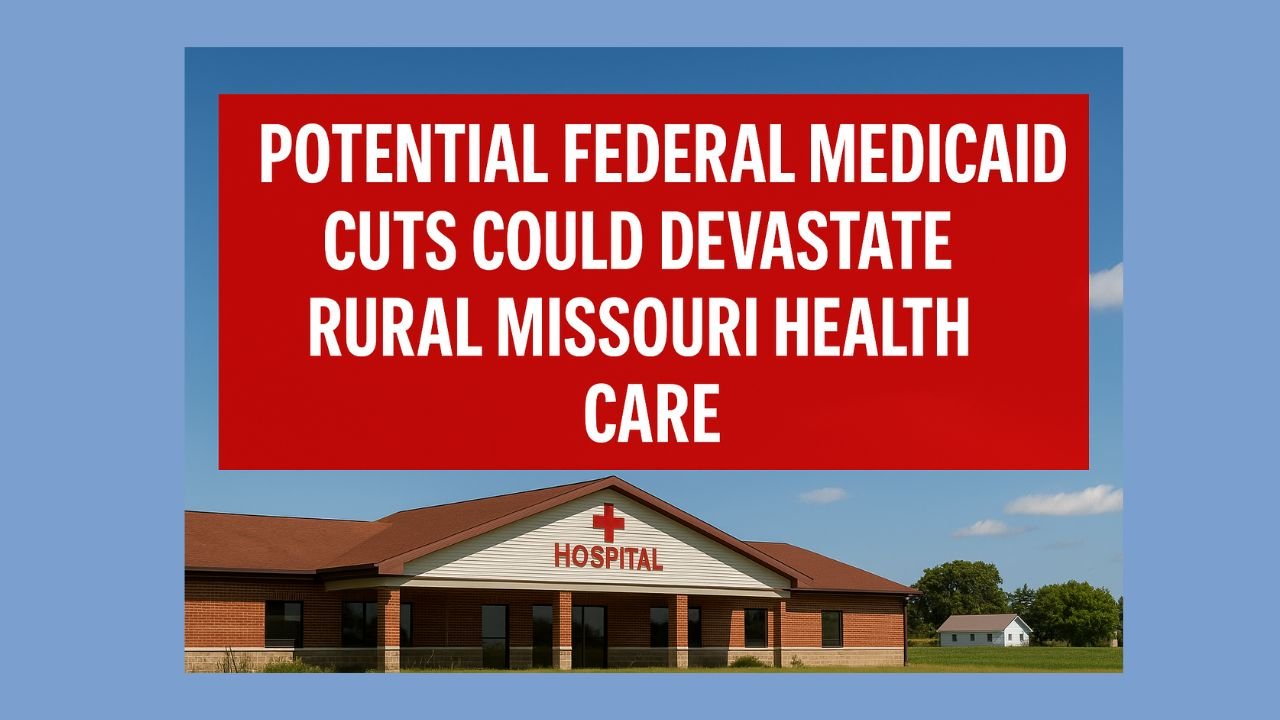As federal lawmakers debate a sweeping spending bill that includes proposed Medicaid funding cuts, rural hospitals in Missouri face an uncertain future.
Health care leaders like Bill Hellebusch, CEO of Hermann Area District Hospital, are sounding the alarm about how these cuts could impact small-town health systems that rely heavily on Medicaid to operate.
Critical Access Hospitals at Risk
The Hermann Area District Hospital, classified as a critical access hospital, receives supplemental Medicaid funding designed to support small, rural facilities.
According to Hellebusch, Medicaid patients make up about 10% of their yearly patient visits—a figure that is below the statewide rural average of 26.3%, as reported by the Missouri Budget Project in late 2024.
Hellebusch explained that rural hospitals like his often serve as the only nearby emergency care option, meaning they are obligated under federal EMTALA laws to treat all patients, regardless of insurance coverage.
“We don’t turn patients away. But when uninsured patients walk through our doors, the financial burden falls directly on us,” he said.
Consequences of Losing Even 1% in Revenue
The stakes are extremely high for hospitals operating on thin margins. Hellebusch emphasized that a 1% drop in hospital revenue could be disastrous.
“We don’t have the financial cushion larger hospital systems enjoy. Even a slight funding cut could force us to close,” he warned.
Historically, critical access hospitals have been vulnerable, with numerous closures in the early 2000s due to inadequate support. Hellebusch pointed out that these closures don’t just affect health care—they destabilize entire communities.
“When a hospital goes, the town often follows,” he said. “We’re not just health care providers; we’re often the largest employers in town and the backbone of local economies.”
Lack of Alternatives and Life-or-Death Travel Times
With the closures of Audrain Community Hospital and Callaway Community Hospital in 2022, some rural residents would now need to travel up to 80 miles to access emergency care. This can be fatal in urgent situations.
Hellebusch recalled the 2023 shooting of two officers in Hermann:
“If our hospital hadn’t been here, Officer Adam Sullentrup might not have survived.”
Broader Economic Effects and the Reality of Cost Shifting
Heidi Lucas, executive director of the Missouri Rural Health Association, highlighted how difficult it is for people in small towns to find jobs that offer health insurance, making them more reliant on Medicaid.
Meanwhile, Timothy McBride, a health economist at Washington University, explained that if hospitals lose money from Medicaid, they often shift costs to privately-insured patients, a practice that raises premiums across the board.
“We’ll all pay for it eventually—through premiums if not through taxes,” McBride said.
Alternative Solutions to Medicaid Cost Control
McBride noted there are better options to reduce Medicaid spending than imposing new work requirements. Experts have suggested:
- Reducing dependence on private insurers for Medicaid payouts
- Investing in preventive care to keep people out of hospitals
- Keeping patients out of long-term nursing care, a major Medicaid cost driver
These strategies could ultimately lead to long-term savings and better outcomes without slashing essential services.
Federal Matching Funds and Provider Taxes at Risk
The proposed legislation also seeks to limit states’ ability to use provider taxes as a mechanism to draw additional federal Medicaid dollars.
Medicaid funding is shared between federal and state governments, and provider taxes are often used to leverage more federal funding.
For instance, Missouri’s federal matching rate was 65% in 2020. That means if Missouri collects $35 million in provider taxes, the federal government contributes $65 million, totaling $100 million in Medicaid funds.
The Congressional Budget Office estimates that proposed limits on this practice could eliminate hundreds of millions of dollars in Medicaid funding over the next decade, though the long-term effects remain uncertain.
If Congress enacts the proposed Medicaid funding reductions, rural Missouri hospitals—especially critical access facilities—could be pushed to the brink of closure. These hospitals are not only vital for delivering emergency care but also serve as economic anchors in small towns.
As health experts and local leaders warn, the impact of these cuts extends far beyond health care access, with potential ripple effects on community stability, insurance premiums, and public health outcomes.




